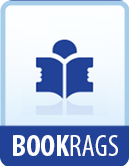But to go on to those early days of the forties. There were two families with whom we were intimate. Mr. George Tinline (who had been clerk to my fathers’ old friend, Williarn Rutherford, of Jedburgh), who was in the bank of South Australia when in 1839, my father went to put our small funds in safety, introduced us to a beautiful young widow, Mrs. Sharpe, and her sisters Eliza and Harriet, and her brother, John Taylor. Harriet afterwards married Edward Stirling, a close friend of my brother-in-law, Andrew Murray, and I was a great deal interested in the Stirlings and their eight children. Mr. William Bakewell, of Bartley & Bakewell, solicitors, married Jane Warren of Springfield, Barossa, and I was a familiar friend of their five children. In one house I was “Miss Spence, the storyteller,” in the other “Miss Spence, the teller of tales!” Some of the tales appeared long after as Christmas stories in The Adelaide Observer, but my young hearers preferred the oral narrative, with appropriate gestures and emphasis, and had no scruple about making faces, to anything printed in books. I took great liberties with what I had read and sometimes invented all. It was a part of their education, probably—certainly, it was a part of mine, and it gave me a command of language which helped me when I became a public speaker. My brother-in-law’s newspaper furnished an occasional opportunity to me, though no doubt he considered that he could fill his twice-a-week journal without my help. He was, however, helpful in other ways. He was one of the subscribers to a Reading Club, and through him I had access to newspapers and magazines. The South Australian Institute was a treasure to the family. I recollect a newcomer being astonished at my sister Mary having read Macaulay’s History. “Why, it was only just out when I left England,” said he. “Well, it did not take longer to come out than you did,” was her reply. We were all omnivorous readers, and the old-fashioned accomplishment of reading aloud was cultivated by both brothers and sisters. I was the only one who could translate French at sight, thanks to Miss Phin’s giving me so much of Racine and Moliere and other good French authors in my school days.
But more important than all this was the fact that we took hold of the growth and development of South Australia, and identified ourselves with it. Nothing is insignificant in the history of a young community, and—above all—nothing seems impossible. I had learned what wealth was, and a great deal about production and exchange for myself in the early history of South Australia—of the value of machinery, of roads and bridges, and of ports for transport and export. I had seen the 4-lb. loaf at 4/ and at 4d. I had seen Adelaide the dearest and the cheapest place to live in. I had seen money orders for 2/6, and even for 6d., current when gold and silver were very scarce. Even before the discovery of copper South Australia had turned the corner. We had gone on the land and become primary producers, and before the gold discoveries in Victoria revolutionized Australia and attracted our male population across the border, the Central State was the only one which had a large surplus of wheat and hay to send to the goldfields.




